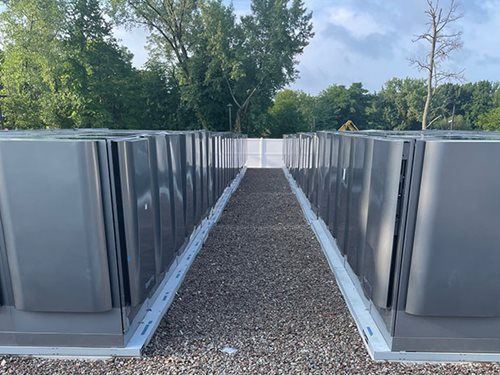$10K Savings in Monthly Electricity Costs Through Community Distributed Generation (CDG) Programs
FirstService Energy: Cost-Saving Solutions for Your Property
Our in-house energy advisors help boards and building owners lower utility costs, curb emissions, and improve whole-building efficiency. Curious what we can do for your building?
*This article is authored by Kelly Dougherty, President of FirstService Energy, the energy advisory affiliate of FirstService Residential.
**Originally printed in the April 2023 issue of Mann Report.
Utility costs are a common pain point for condominium and co-operative boards and multifamily building owners affected by a steady rise in their energy bills. New York City is no exception, where electricity and natural gas utility bills typically account for about 30% of building operating costs. There is no single solution for every property, but some buildings are saving around $10,000 each month on electricity costs by participating in Community Distribution Generation (CDG) programs, a legitimate, cost-free solution that yields significant savings for subscribers.While the operation of CDG programs was approved by the New York State Public Service Commission in 2015, they are still a new concept for multifamily boards and building owners.
Community Distributed Generation
Unlike power plants, which are the most common consolidated energy facilities, CDG facilities are typically smaller, privately owned sites where electricity is generated, stored and distributed back to the local power grid.Buildings subscribed to a CDG program will receive an allotted number of energy credits determined by electricity usage in the building. The electricity will still be delivered by Con Edison, National Grid or a similar utility company, and the credits will offset electric delivery fees built into a typical statement. Average savings range between 6% and 10% each month.
While this may seem like a nominal percentage, the savings can be significant, especially for large multifamily buildings, amenity-rich properties or mixed-use residential buildings with one or more commercial tenants.
Big Picture Benefits
After a years-long population exodus during the pandemic, cities around the U.S. are experiencing a population rebound. In places like New York City, this return raises concerns over how much the electric grid can handle during peak times of the year and how to incentivize boards, owners and developers to invest in clean energy programs that help curb carbon emissions and the reliance on fossil fuels.CDG programs are among the latest initiatives endorsed by New York State to bolster the production of clean, resilient and affordable energy. In practice, these facilities reduce the amount of energy needed from large, centralized power plants that contribute around 32% of all energy-related CO2 emissions in the country.
CDG facilities also distribute energy back to the electric grid, which helps alleviate stress during peak usage times. For multifamily residential subscribers, the most common type of CDG facility will include solar photovoltaic arrays, small wind turbines or fuel cells.
The most environmentally friendly facilities do not rely on combustion to produce energy, which can also be less efficient due to efficiencies of scale.
As an added benefit, these facilities are often located closer to program subscribers than large industrial power plants. As a result, CDG programs help offset line loss, or wasted energy, which occurs during the transmission and delivery of electricity over long distances. Typical line loss can range from 20% to 30% depending on distance, seasonal weather and infrastructure conditions.
Most boards and owners in New York are eligible to subscribe their building to a CDG program. These programs, however, are competitive, especially in dense urban areas like New York City where the volume of interested customers surpasses current availability.
CDG in Action
Based on the size of FirstService Residential’s management portfolio, the company’s energy advisory affiliate FirstService Energy, can negotiate a higher rate of savings through CDG programs than site owners typically offer to other participants. A stand-out example of how a property can benefit from subscribing to a CDG program is 75 Wall St., a 346-unit condominium tower in Manhattan’s Financial District. The condominium’s board of owners elected to subscribe the property to this completely free program and is estimated to save more than $70,000 in electricity costs over the next 12 months. The building’s experience illustrates how easy it is for boards and owners to save money while also contributing to New York’s efforts to “green up” the energy grid.
A stand-out example of how a property can benefit from subscribing to a CDG program is 75 Wall St., a 346-unit condominium tower in Manhattan’s Financial District. The condominium’s board of owners elected to subscribe the property to this completely free program and is estimated to save more than $70,000 in electricity costs over the next 12 months. The building’s experience illustrates how easy it is for boards and owners to save money while also contributing to New York’s efforts to “green up” the energy grid.Across FirstService Residential’s portfolio of managed buildings, these savings are estimated to save $600,000 in annual energy credits for participants. As a result, many buildings managed by FirstService Residential are eager to join the program, which currently has a waitlist for new customers.

[Above] Bloom Energy’s solid oxide fuel cell facility in Staten Island generates clean energy for FirstService Residential's Community Distributed Generation (CDG) program. Read more about 75 Wall Street's success with the program.
What’s Next for CDG?
CDG programs are a progressive answer to improving how states, cities and local communities improve equitable access to affordable and renewable energy sources. That said, there is still room for expansion. For that to happen, developers will need to construct larger project sites with the capacity to support more customers. The availability of capital resources is often at the core of whether a project takes off or stalls on paper.Support could arrive in the form of private investments, state or federal incentive programs, tax breaks for developers, or a combination of various sources of funding. Most recently, the Inflation Reduction Act (IRA) of 2022 allocated $3 billion in environmental grants to support community-led projects including landfill redevelopment into clean energy projects. Following the passage of the IRA, Coast Energy, a private developer of solar and energy storage projects, announced its plans to install more than 16,000 solar panels across 35 acres in Brookhaven, New York. The property once functioned as a landfill and will feed into Long Island’s Public Service Enterprise Group (PSEG) energy grid upon completion. The site will be equipped to generate 8.6 MW of energy. As additional resources become available to develop new CDG and clean energy facilities, roadmaps to achieve carbon neutrality and a clean energy grid will be more feasible.
 —Kelly Dougherty, President |
—Kelly Dougherty, President |